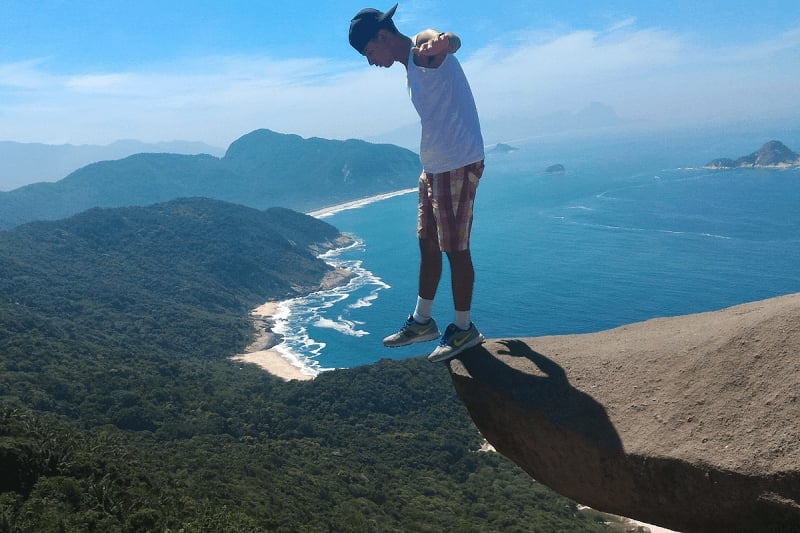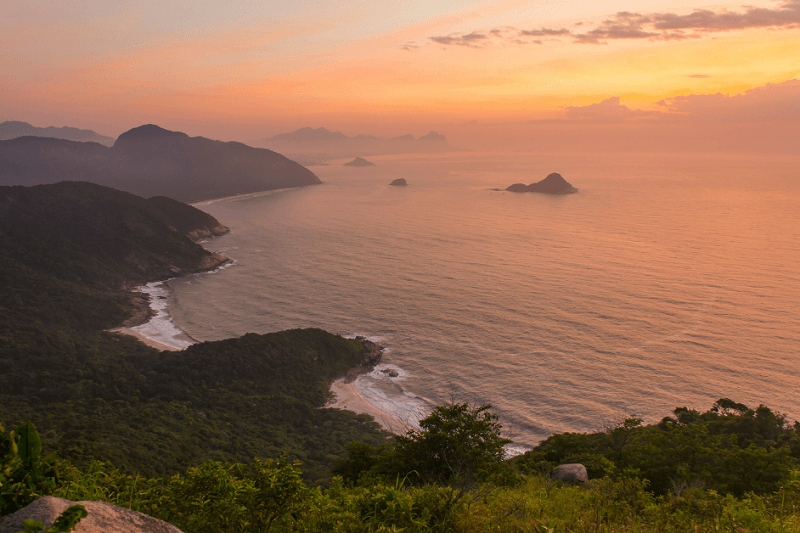If you’re one of those travellers who enjoy looking at death-defying travel poses for whatever personal satisfaction it brings, then it’s very likely you’ve come across images of Pedra Do Telégrafo. It’s that pointy rock overlooking a beach in Rio, Brazil where people pull off seemingly dangerous stunts for the ‘gram.
To be more specific, they’re often seen sitting candidly or hanging on to the tip of the rock atop Guaratiba Hill, supposedly hoping to bring attention to the beautiful Praias Selvagens or Wild Beaches in the background. The outcome? Hundreds to millions of reactions on social media, depending on the kind of following they have.
Also read: Top 10 Things to Experience in South America
The real story about this Brazil hotspot
While certainly eye-catching, the images are notorious on the Internet for promoting reckless travel. The same goes for countless others taken in similar attractions where audacious travellers boast of the same risky poses. On the other hand, some people might say that these photos promote getting out of one’s comfort zone — even if it could mean potentially hurting someone in the process.

Image credit: Jefferson Vieira de Melo
Either way, the fact is that these Pedra Do Telégrafo photos are nothing more than an illusion. One that people have actually debunked countless times over the years. While it appears that the person, in most photos of this Brazil attraction, is suspended in the air with just a rock to grab on to, there’s solid ground only a few feet below.
No photoshopping is often involved, but it’s the brilliant angling that definitely makes these photos (sometimes videos) all the more entertaining. Fair warning, though. Hiking to Pedra Do Telégrafo can be highly weather-dependent; sometimes, taking the perfect shot can cost you a few Brazilian reals — that is, if you ask for help from a local professional photographer stationed nearby.
Also read: Travelling For The ‘Gram? News Flash — It’s Totally Normal!
How “fake” images can become dangerous
Photos like those taken at Pedra Do Telégrafo, one of the must-visit places in Rio de Janeiro, have been the subject of a few debates. Particularly, on responsible versus irresponsible travel. The topic has also sparked discussions on why reacting before reading content on social media is just as dangerous. But more importantly, how glorifying such content can harrowingly mislead people into doing similar stunts with actual risk.

Image credit: Brunomartinsimagens via Canva Pro
Take a Facebook post by Diane Richardson Shephard for example. Shared in May 2021, the post contains a series of photos of the famed Brazil attraction where tourists seemingly pose dangerously at the edge of the cliff. It ended with a photo that shows what it looks like in real life: an extremely low cliff complete with a crowd of tourists waiting for their turn to take a photo.
A lot of the comments immediately criticised the photos for being “insane” because of how their subjects seem to be tempting fate for attention. Some brought up how many of these critics on the Internet are quick to speak without knowing more about the truth behind the images: that those who took them were merely faking these death-defying stunts by playing with different perspectives.
Others looked at the bigger picture, saying that those naive enough could copy these things in real dangerous situations. Another mentioned how attempting to be “creative” with poses on a hilltop 350 metres above the ground could eventually cause someone to slip or fall down. Not to mention, there are natural elements that could take over and injure anyone close to the attraction.
Would you climb to Pedra Do Telégrafo for your own version of the popular cliff-hanging photo?
Featured image credit: Raphael Nogueira | Unsplash




